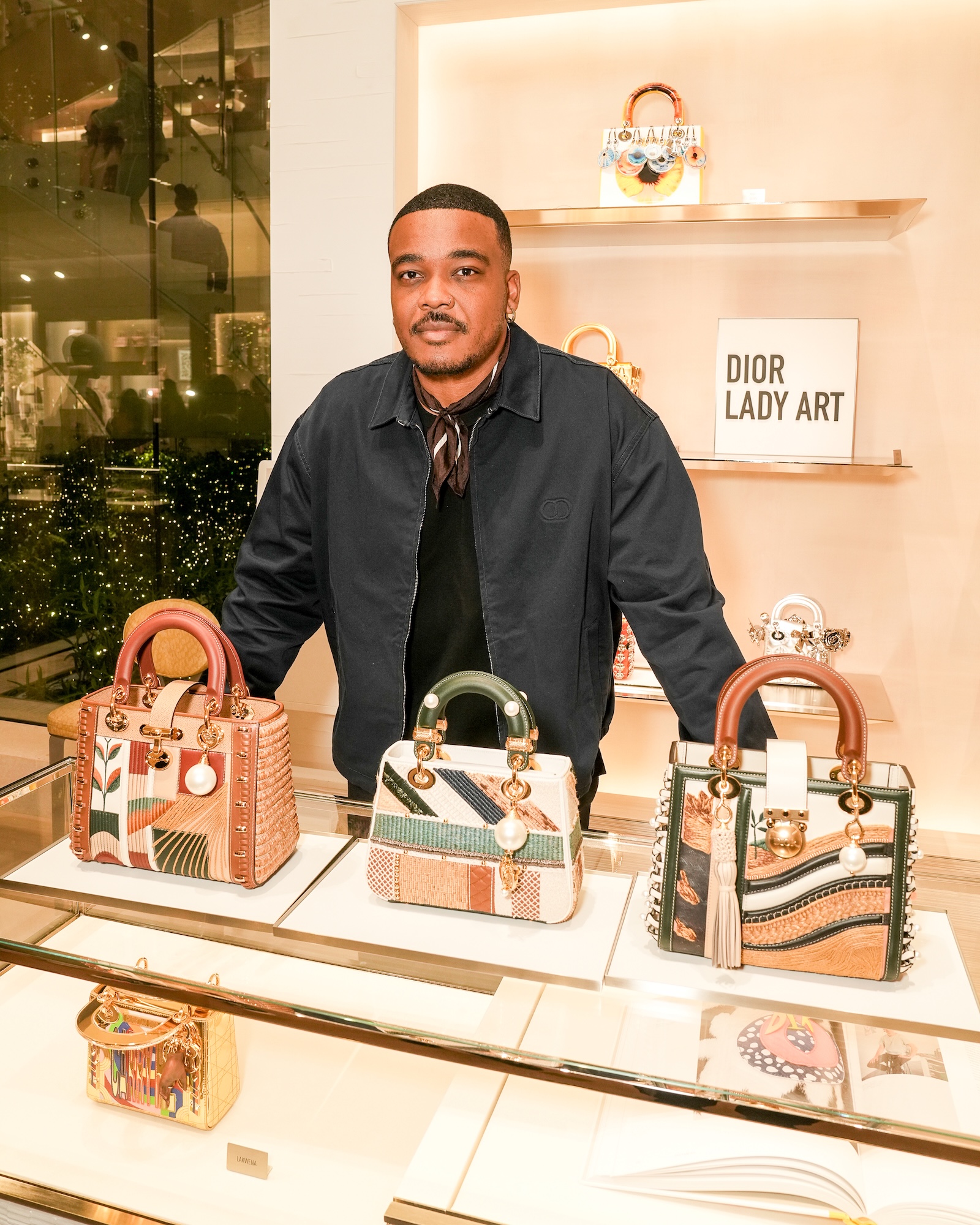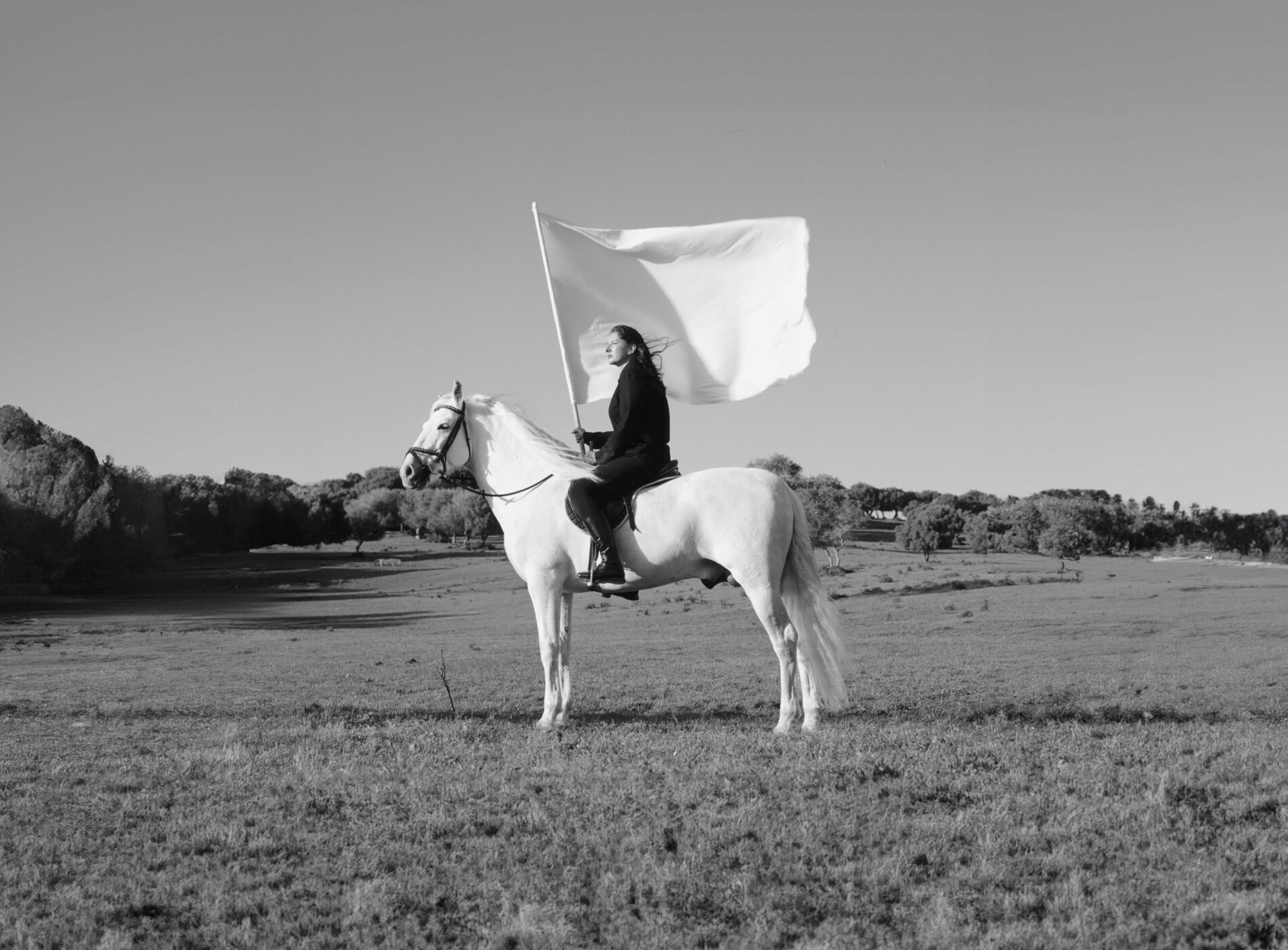

**Simon Burstall** has the soul of a ‘90s kid. Throughout his years at a Sydney-based boarding school, Simon became quickly entranced by the birth of a subculture— Raves. Whether he was passed a mysterious flyer or landline number, Burstall always found his way to the warehouse location of the night.
The start of the Australian rave culture was electrifying, and despite the crowds, rather intimate. His infatuation with the scene extended further in the development of his thesis when he began to document his experiences from 1992-93. In his new book “[**’93: Punching the Light**](https://www.artbook.com/9788862086769.html),” Burstall shares a snapshot of this life with a mix of xeroxed party flyers, teenage diary entries, mixtapes, and raw black and white footage. **_Flaunt_** spoke with the photographer-turned-author to discuss his ‘90s rave persona.


**_Your journey into photography began surfing with friends. When did you decide to pursue it seriously, and how did it evolve from that point?_**
I pursued it seriously when I left my southern Sydney school for the inner Sydney boarding school. My art teacher pulled me aside and asked me what I liked to do, paint? “No,” sculpture “no,” draw “nope," I told him I liked to take pictures of my mate's surfing. So I bought a Nikon, and he threw a bunch of film at me and encouraged me to build a thesis and a concept based around what I loved at the time, which was the rave scene. I finished school with a very strong project based on those photos. I knew that I wanted to pursue taking pictures; I didn’t want to go to college or University. I wanted nothing more than to pursue being a professional photographer. The next stage was for me to train as a photo assistant with high-end advertising and commercial photographers based in Australia and learn the business and craft. At the age of 22, I planned to leave for NYC, and I wanted to work for the best of the best in the world. But, I broke both my wrists skateboarding, so that pushed my plans back until age 24. One cast was on for nine months and one for a year and a half with no use of my thumbs. Even with that injury, I still managed to load film and drive a car. I was determined not to let it stop me.


**_When were you first introduced to rave culture?_**
1991\. A rave called hardware, and I was 16 years old. It was at Darling Harbours exhibition center, and it was the first time I ever did acid. I went with my mate Ben Hansberry, and we were the first of our friends to do that. I don’t recall how we found out about it, but it was life-changing.
**_What was your signature rave look at that time?_**
Most of it was purchased through hours of thrifting. I personally loved a large denim bell-bottom that was bigger than the shoe and usually dragged over my caterpillar boots or my favorite navy blue FILAs or the classic Air Max 90s. I would wear a 70s polyester style bowling shirt that would stink by the end of the night since polyester doesn’t breathe. On top of that, I would wear a grandpa style cardigan that was quite fitted over the top as well. We were all so skinny, and in these clothes, it was quite funny.


**_Your thesis was based on your experience in Sydney and the rave scene. What did you discuss, and how was it received by your teachers and peers?_**
My teacher had me focus on the things that were important to me. I talked about the fashion, the community, the subculture, the element that it was a hidden society that was all our own. I was an insider and had access to all this. My teacher was encouraging, so much that he came with me to a party at 4 am and sat with me for hours and taught me composition, and the use of backgrounds. My peers knew at the time that these pictures were special, as I did. I remember like it was yesterday standing on industrial fridges with my camera. The fridges were shaking underneath me with bass with a sea of teenagers in front of me at 8 am. I didn’t know what depth of field was, or how to focus, but I just knew and felt that I had to capture this. And I knew then when I was taking the pictures how special they were and how special they are today.
**_Who were some of your favorite DJ’s to follow?_**
Abel, Jumping Jack, Sugar Ray, Ming D, Paul Holden.


**_What drew you to photograph that scene most?_**
This was totally unknown, in dark alleys and back streets. The police didn’t even know about it. It had never been done before. It was something so new and so wild-- there was nothing like this, ever, and each one was different, in a different location. I loved the secrecy of it and feeling that it was like a secret society. I made sure I was never shooting with flash. I didn’t want to impose on the feeling that everyone was experiencing, so I chose only to shoot early morning or long exposures inside. I wanted to keep that intimacy.
**_Tell us about a vivid memory you have from ’93._**
There are so many. But the one I am thinking of right now is when I was coming from the car park at 5 am heading back into the rave when I saw a man with dreadlocks happily skipping naked towards me and the entrance to the party. When large Polynesian security guards laughing at him and his penis, grabbed him and wrapped him in plastic and removed him. I had to question if I was seeing things, but reality sunk in when they wrapped him in that plastic and took him away to I don’t know where and I didn’t really care. It’s one of my diary entries.


**_How has this part of your life shaped your work to date?_**
I knew that I wanted to focus on people and how people’s personalities or choice of style and fashion made up their sense of who they are. Their personality. I am drawn to the beauty of the unique nature of humans from their faces to their energy to their choices of how they carry themselves. This has come out of my work with the use of casting, fashion, and also my ability to bring out and give the subject confidence to feel comfortable in front of the camera, which is an uncomfortable place to be for most people. I want the subject to feel at ease so I can capture those in-between moments and the essence of who they are by allowing them to feel free in front of the camera.
* * *
 
**Simon Burstall** has the soul of a ‘90s kid. Throughout his years at a Sydney-based boarding school, Simon became quickly entranced by the birth of a subculture— Raves. Whether he was passed a mysterious flyer or landline number, Burstall always found his way to the warehouse location of the night.
The start of the Australian rave culture was electrifying, and despite the crowds, rather intimate. His infatuation with the scene extended further in the development of his thesis when he began to document his experiences from 1992-93. In his new book “[**’93: Punching the Light**](https://www.artbook.com/9788862086769.html),” Burstall shares a snapshot of this life with a mix of xeroxed party flyers, teenage diary entries, mixtapes, and raw black and white footage. **_Flaunt_** spoke with the photographer-turned-author to discuss his ‘90s rave persona.

**Simon Burstall** has the soul of a ‘90s kid. Throughout his years at a Sydney-based boarding school, Simon became quickly entranced by the birth of a subculture— Raves. Whether he was passed a mysterious flyer or landline number, Burstall always found his way to the warehouse location of the night.
The start of the Australian rave culture was electrifying, and despite the crowds, rather intimate. His infatuation with the scene extended further in the development of his thesis when he began to document his experiences from 1992-93. In his new book “[**’93: Punching the Light**](https://www.artbook.com/9788862086769.html),” Burstall shares a snapshot of this life with a mix of xeroxed party flyers, teenage diary entries, mixtapes, and raw black and white footage. **_Flaunt_** spoke with the photographer-turned-author to discuss his ‘90s rave persona.
 
**_Your journey into photography began surfing with friends. When did you decide to pursue it seriously, and how did it evolve from that point?_**
I pursued it seriously when I left my southern Sydney school for the inner Sydney boarding school. My art teacher pulled me aside and asked me what I liked to do, paint? “No,” sculpture “no,” draw “nope," I told him I liked to take pictures of my mate's surfing. So I bought a Nikon, and he threw a bunch of film at me and encouraged me to build a thesis and a concept based around what I loved at the time, which was the rave scene. I finished school with a very strong project based on those photos. I knew that I wanted to pursue taking pictures; I didn’t want to go to college or University. I wanted nothing more than to pursue being a professional photographer. The next stage was for me to train as a photo assistant with high-end advertising and commercial photographers based in Australia and learn the business and craft. At the age of 22, I planned to leave for NYC, and I wanted to work for the best of the best in the world. But, I broke both my wrists skateboarding, so that pushed my plans back until age 24. One cast was on for nine months and one for a year and a half with no use of my thumbs. Even with that injury, I still managed to load film and drive a car. I was determined not to let it stop me.

**_Your journey into photography began surfing with friends. When did you decide to pursue it seriously, and how did it evolve from that point?_**
I pursued it seriously when I left my southern Sydney school for the inner Sydney boarding school. My art teacher pulled me aside and asked me what I liked to do, paint? “No,” sculpture “no,” draw “nope," I told him I liked to take pictures of my mate's surfing. So I bought a Nikon, and he threw a bunch of film at me and encouraged me to build a thesis and a concept based around what I loved at the time, which was the rave scene. I finished school with a very strong project based on those photos. I knew that I wanted to pursue taking pictures; I didn’t want to go to college or University. I wanted nothing more than to pursue being a professional photographer. The next stage was for me to train as a photo assistant with high-end advertising and commercial photographers based in Australia and learn the business and craft. At the age of 22, I planned to leave for NYC, and I wanted to work for the best of the best in the world. But, I broke both my wrists skateboarding, so that pushed my plans back until age 24. One cast was on for nine months and one for a year and a half with no use of my thumbs. Even with that injury, I still managed to load film and drive a car. I was determined not to let it stop me.
 
**_When were you first introduced to rave culture?_**
1991\. A rave called hardware, and I was 16 years old. It was at Darling Harbours exhibition center, and it was the first time I ever did acid. I went with my mate Ben Hansberry, and we were the first of our friends to do that. I don’t recall how we found out about it, but it was life-changing.
**_What was your signature rave look at that time?_**
Most of it was purchased through hours of thrifting. I personally loved a large denim bell-bottom that was bigger than the shoe and usually dragged over my caterpillar boots or my favorite navy blue FILAs or the classic Air Max 90s. I would wear a 70s polyester style bowling shirt that would stink by the end of the night since polyester doesn’t breathe. On top of that, I would wear a grandpa style cardigan that was quite fitted over the top as well. We were all so skinny, and in these clothes, it was quite funny.

**_When were you first introduced to rave culture?_**
1991\. A rave called hardware, and I was 16 years old. It was at Darling Harbours exhibition center, and it was the first time I ever did acid. I went with my mate Ben Hansberry, and we were the first of our friends to do that. I don’t recall how we found out about it, but it was life-changing.
**_What was your signature rave look at that time?_**
Most of it was purchased through hours of thrifting. I personally loved a large denim bell-bottom that was bigger than the shoe and usually dragged over my caterpillar boots or my favorite navy blue FILAs or the classic Air Max 90s. I would wear a 70s polyester style bowling shirt that would stink by the end of the night since polyester doesn’t breathe. On top of that, I would wear a grandpa style cardigan that was quite fitted over the top as well. We were all so skinny, and in these clothes, it was quite funny.
 
**_Your thesis was based on your experience in Sydney and the rave scene. What did you discuss, and how was it received by your teachers and peers?_**
My teacher had me focus on the things that were important to me. I talked about the fashion, the community, the subculture, the element that it was a hidden society that was all our own. I was an insider and had access to all this. My teacher was encouraging, so much that he came with me to a party at 4 am and sat with me for hours and taught me composition, and the use of backgrounds. My peers knew at the time that these pictures were special, as I did. I remember like it was yesterday standing on industrial fridges with my camera. The fridges were shaking underneath me with bass with a sea of teenagers in front of me at 8 am. I didn’t know what depth of field was, or how to focus, but I just knew and felt that I had to capture this. And I knew then when I was taking the pictures how special they were and how special they are today.
**_Who were some of your favorite DJ’s to follow?_**
Abel, Jumping Jack, Sugar Ray, Ming D, Paul Holden.

**_Your thesis was based on your experience in Sydney and the rave scene. What did you discuss, and how was it received by your teachers and peers?_**
My teacher had me focus on the things that were important to me. I talked about the fashion, the community, the subculture, the element that it was a hidden society that was all our own. I was an insider and had access to all this. My teacher was encouraging, so much that he came with me to a party at 4 am and sat with me for hours and taught me composition, and the use of backgrounds. My peers knew at the time that these pictures were special, as I did. I remember like it was yesterday standing on industrial fridges with my camera. The fridges were shaking underneath me with bass with a sea of teenagers in front of me at 8 am. I didn’t know what depth of field was, or how to focus, but I just knew and felt that I had to capture this. And I knew then when I was taking the pictures how special they were and how special they are today.
**_Who were some of your favorite DJ’s to follow?_**
Abel, Jumping Jack, Sugar Ray, Ming D, Paul Holden.
 
**_What drew you to photograph that scene most?_**
This was totally unknown, in dark alleys and back streets. The police didn’t even know about it. It had never been done before. It was something so new and so wild-- there was nothing like this, ever, and each one was different, in a different location. I loved the secrecy of it and feeling that it was like a secret society. I made sure I was never shooting with flash. I didn’t want to impose on the feeling that everyone was experiencing, so I chose only to shoot early morning or long exposures inside. I wanted to keep that intimacy.
**_Tell us about a vivid memory you have from ’93._**
There are so many. But the one I am thinking of right now is when I was coming from the car park at 5 am heading back into the rave when I saw a man with dreadlocks happily skipping naked towards me and the entrance to the party. When large Polynesian security guards laughing at him and his penis, grabbed him and wrapped him in plastic and removed him. I had to question if I was seeing things, but reality sunk in when they wrapped him in that plastic and took him away to I don’t know where and I didn’t really care. It’s one of my diary entries.

**_What drew you to photograph that scene most?_**
This was totally unknown, in dark alleys and back streets. The police didn’t even know about it. It had never been done before. It was something so new and so wild-- there was nothing like this, ever, and each one was different, in a different location. I loved the secrecy of it and feeling that it was like a secret society. I made sure I was never shooting with flash. I didn’t want to impose on the feeling that everyone was experiencing, so I chose only to shoot early morning or long exposures inside. I wanted to keep that intimacy.
**_Tell us about a vivid memory you have from ’93._**
There are so many. But the one I am thinking of right now is when I was coming from the car park at 5 am heading back into the rave when I saw a man with dreadlocks happily skipping naked towards me and the entrance to the party. When large Polynesian security guards laughing at him and his penis, grabbed him and wrapped him in plastic and removed him. I had to question if I was seeing things, but reality sunk in when they wrapped him in that plastic and took him away to I don’t know where and I didn’t really care. It’s one of my diary entries.
 
**_How has this part of your life shaped your work to date?_**
I knew that I wanted to focus on people and how people’s personalities or choice of style and fashion made up their sense of who they are. Their personality. I am drawn to the beauty of the unique nature of humans from their faces to their energy to their choices of how they carry themselves. This has come out of my work with the use of casting, fashion, and also my ability to bring out and give the subject confidence to feel comfortable in front of the camera, which is an uncomfortable place to be for most people. I want the subject to feel at ease so I can capture those in-between moments and the essence of who they are by allowing them to feel free in front of the camera.
* * *

**_How has this part of your life shaped your work to date?_**
I knew that I wanted to focus on people and how people’s personalities or choice of style and fashion made up their sense of who they are. Their personality. I am drawn to the beauty of the unique nature of humans from their faces to their energy to their choices of how they carry themselves. This has come out of my work with the use of casting, fashion, and also my ability to bring out and give the subject confidence to feel comfortable in front of the camera, which is an uncomfortable place to be for most people. I want the subject to feel at ease so I can capture those in-between moments and the essence of who they are by allowing them to feel free in front of the camera.
* * *

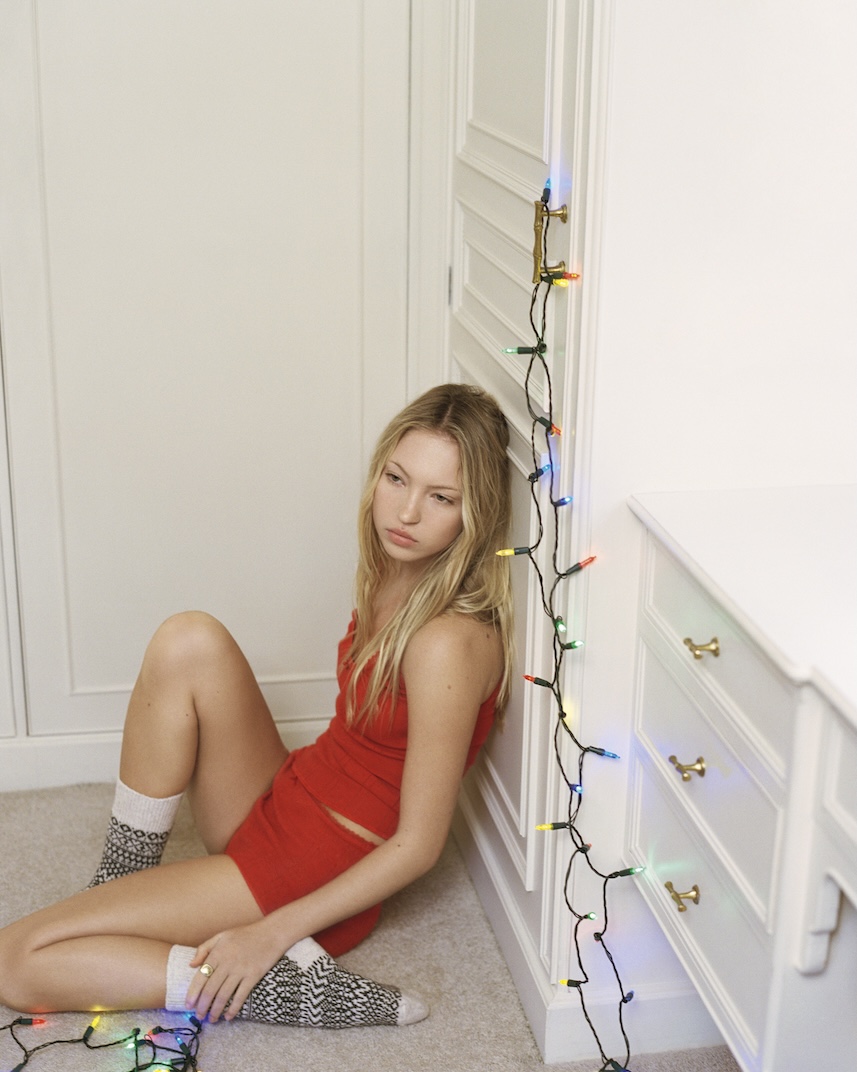
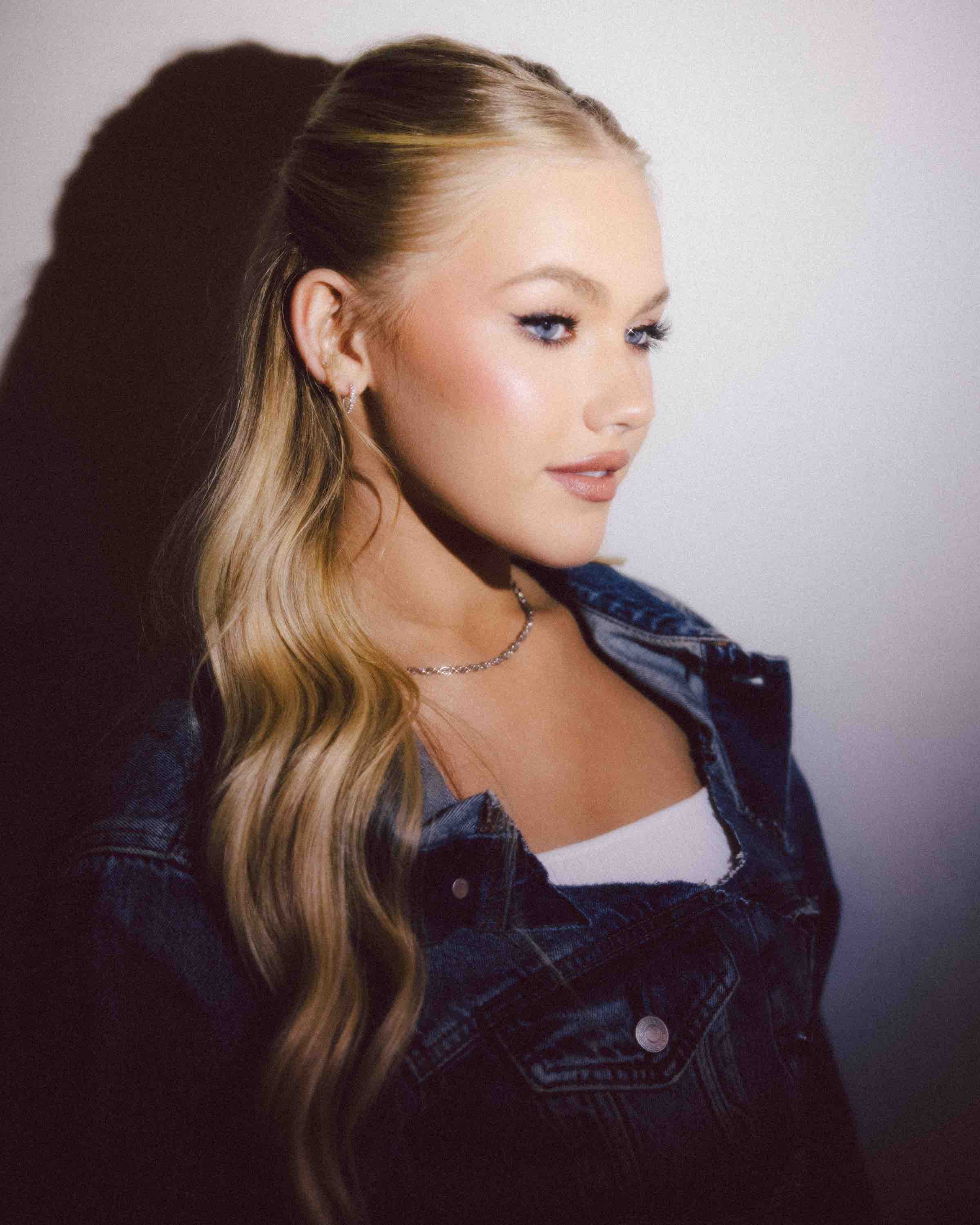
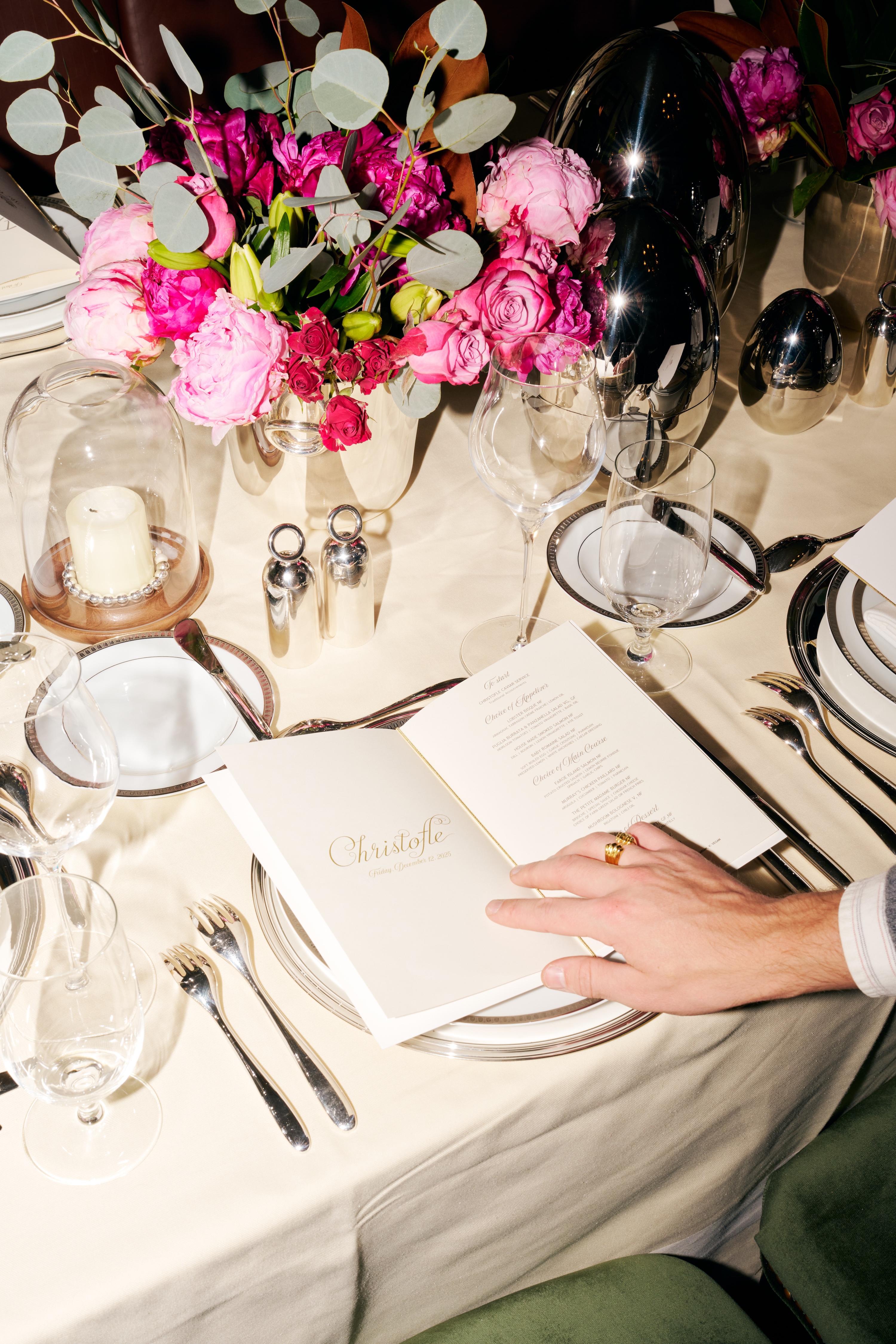

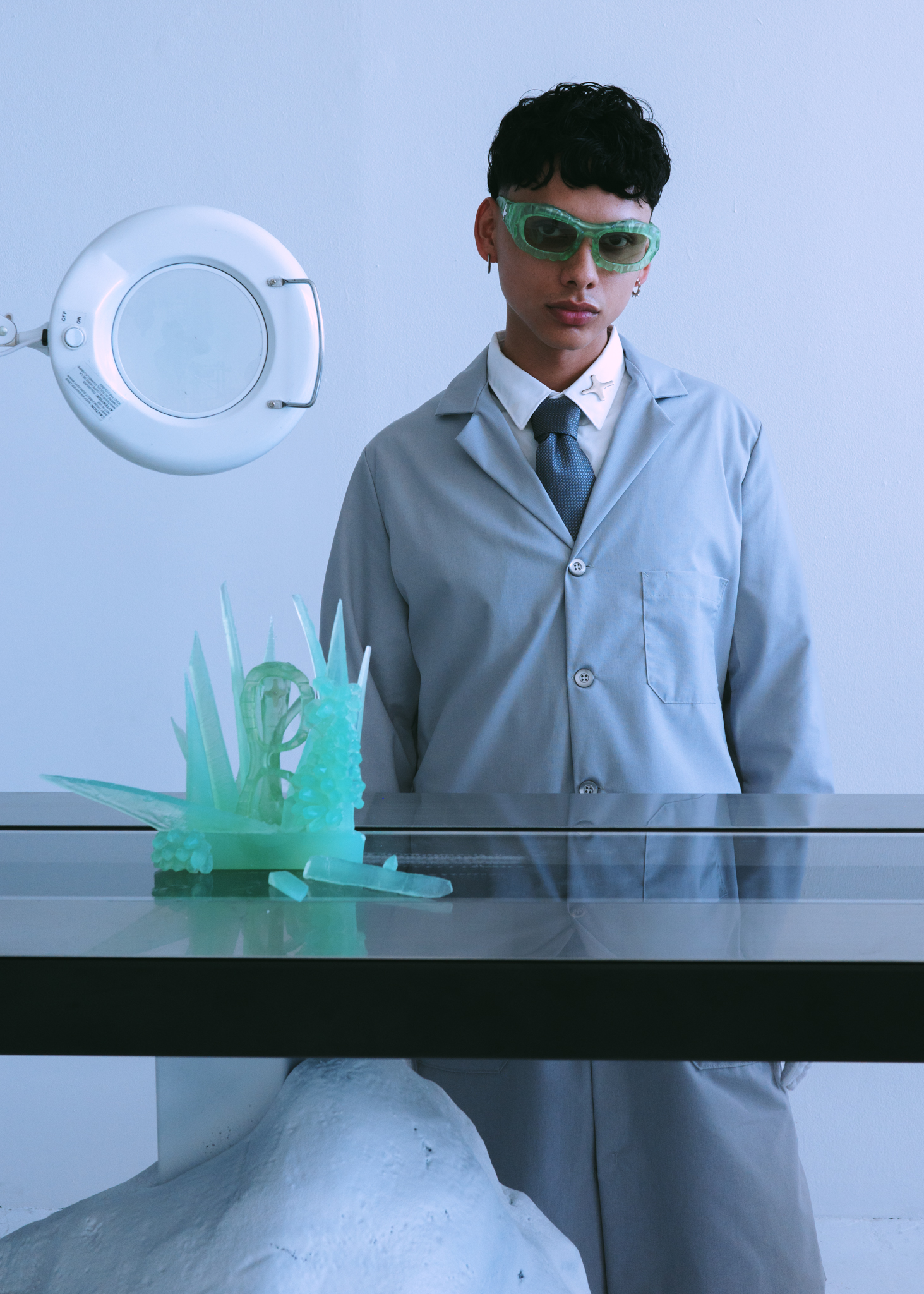
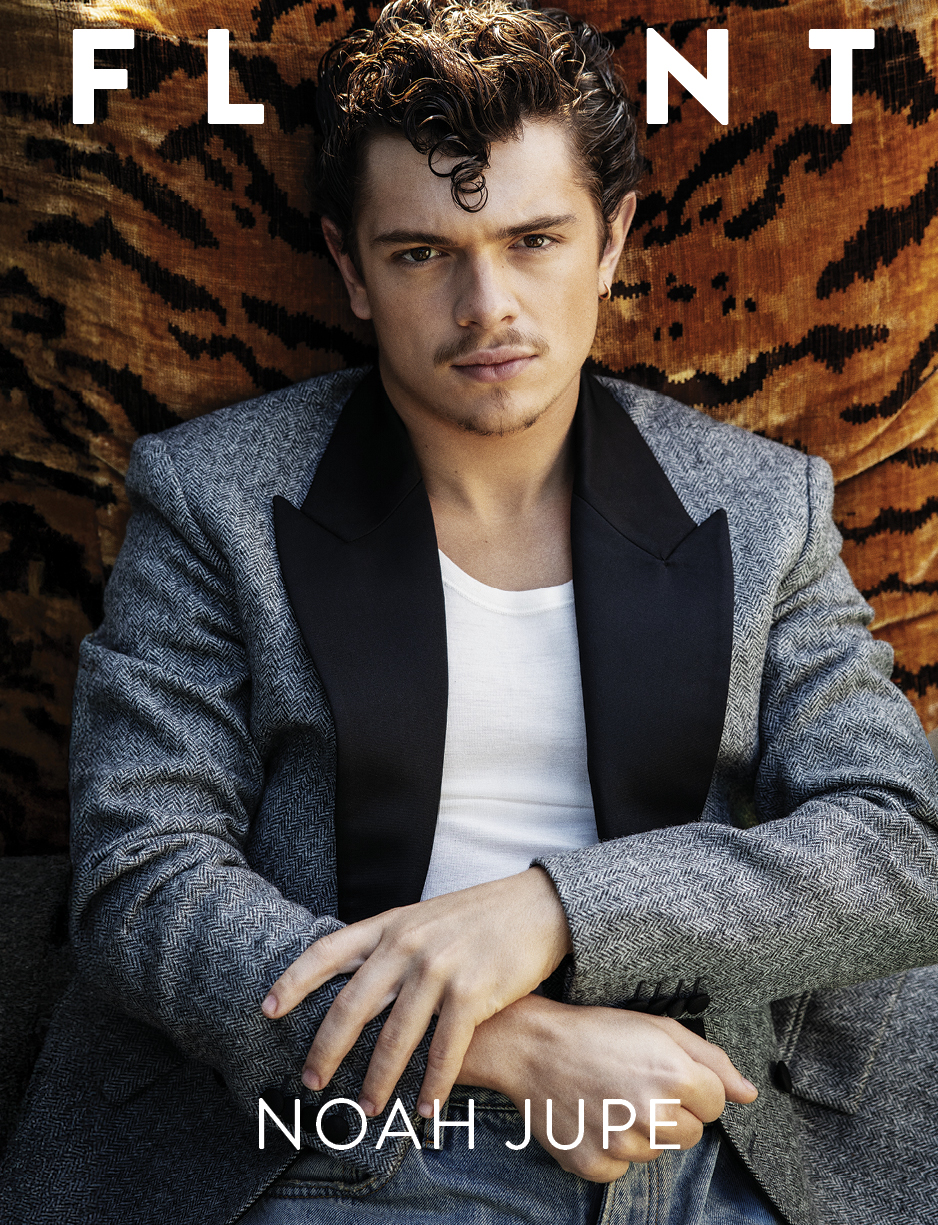
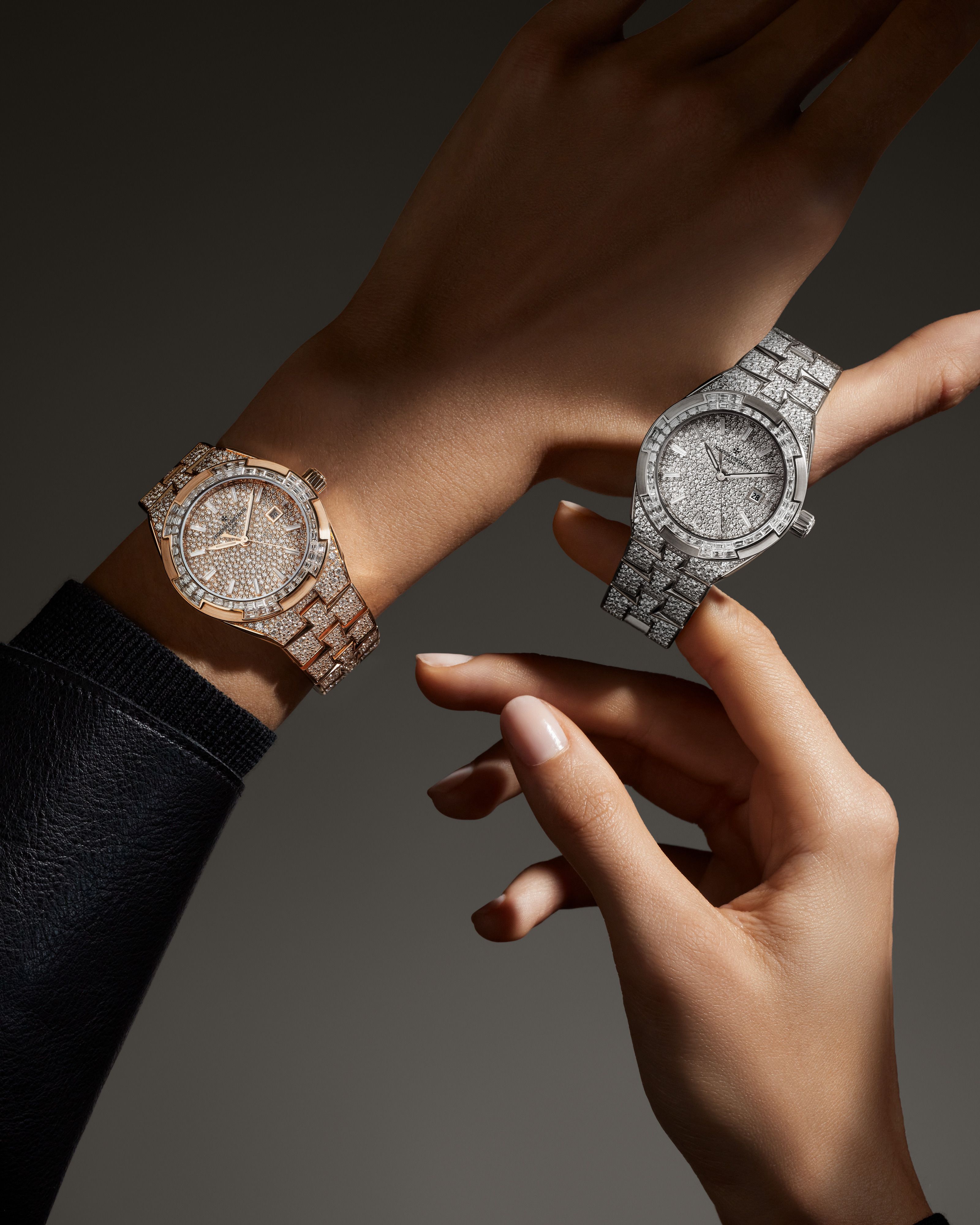

.JPG)
.jpg)
